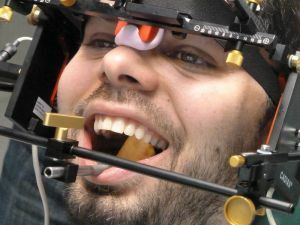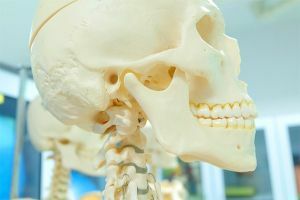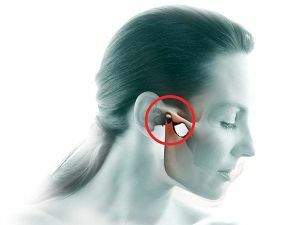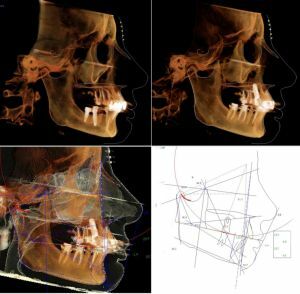 Gnathology( the science of the jaws) is a vast teaching. We are talking about the morphology and physiology of the orofacial system, studying the relationship between the structure and function of the tissues and organs of the dentoalveolar system.
Gnathology( the science of the jaws) is a vast teaching. We are talking about the morphology and physiology of the orofacial system, studying the relationship between the structure and function of the tissues and organs of the dentoalveolar system.
This area of dentistry searches for the boundaries between the normal and pathological conditions of the jaw system. A dentist-gnathologist treats diseases of the temporomandibular joint.
Contents of
- General description and practical value of
- What tasks does the gnathologist solve?
- Who needs specialist help. ..
- TMJ violations
- . .. and that he can
- The cost of gynatological therapy
General description and practical value
Gnatological data helps in the prevention of complications in all areas of dentistry and is used to treat diseases of the entire orofacial system.
This science describes the morphology of the chewing apparatus, discusses the biomechanics, statics and dynamics of the mandible, the structure and function of the chewing surfaces of the dental arches. Gnathology also characterizes chewing muscles, jaw joints and the process of food processing.
Another area of gnathology deals with the problems of "mutual relations" of chewing surfaces, jaw joints and chewing muscles.
Theoretical knowledge finds practical application in orthopedic rehabilitation of teeth. In this case, special  tools and devices are used: arches for the face and articulators, pantographs, kinesiographs, jaw training apparatus. Of these devices, articulators are most often used in the construction of non-removable and removable dentures.
tools and devices are used: arches for the face and articulators, pantographs, kinesiographs, jaw training apparatus. Of these devices, articulators are most often used in the construction of non-removable and removable dentures.
Gnathology gives instructions on how to operate in the rational reconstruction of intermaxillary interactions, how to plan the appropriate types of dentures with respect to the transfer of masticatory pressure, recommends procedures for the functional modeling of masticatory surfaces, and provides a formula for selecting artificial teeth.
What tasks does a gnathologist solve?
Specialization of gnatologist includes systemic violations of the TMJ.These dysfunctions can be grouped into the following items( subgroups):
- pain in the jaw muscles;
- dislocation of the disk;
- arthralgia, osteoarthritis and osteoarthritis of the TMJ.
Thus, the task of a specialist is to determine the degree of violation of the TMJ and suggest ways to resolve the problem.
Important is the fact that the scope of this specialist is limited to the violation( dysfunction) of VNCH.In the event that it comes to the development of the defeat of organic nature, the solution of the problem is in the competence of another specialist, for example, a surgeon.
However, almost always when surgical intervention is necessary, the help of a gnatologist is extremely important.
This specialist also determines the permissible difference between natural and artificial teeth in fixed and removable dentures.
Who needs the help of a specialist. ..
 Do you suffer from a headache, or pain syndrome in the jaw, neck( perhaps even giving up in the shoulders), experience frequent health problems with the mouth or problems with grinding of teeth, cracked tooth enamel?
Do you suffer from a headache, or pain syndrome in the jaw, neck( perhaps even giving up in the shoulders), experience frequent health problems with the mouth or problems with grinding of teeth, cracked tooth enamel?
All these symptoms are a prerequisite for visiting a gnatologist. In such cases, it is necessary to assess the relationship of the origin of the headache / toothache to tooth damage. With the help of digital computer bite analysis, which is absolutely painless, within a few minutes the expert will discover the cause of the origin of the problem.
Violations of the TMJ
With the violation of the TMJ, people often turn to a specialist in case of the appearance of pain in the ears, sometimes with irradiation to the lower jaw or whiskey. The pain is accompanied by a crackling of the jaw, restriction of the opening of the mouth, sometimes with a lateral deviation.
The main examination is carried out with the help of palpation, auscultation and using visualization methods. Conventional radiography is only of limited importance, since it shows only the bone structure. X-rays are used when there is a suspicion of a fracture or inflammatory process, i.e.degenerative joint changes.
In case of suspicion of a temporomandibular joint disc disruption, it is advisable to conduct an examination using MRI or dynamic studies using ultrasound.
Visual examination of articular structures using miniature optics( arthroscopy) allows to open a view, especially on the upper space of the joint, and is performed under general anesthesia. Functional disorders of the temporomandibular joint can be divided into the following groups:
- pain associated with the function of the temporomandibular joint and masticatory muscles;
- position change( dislocation) of the joint disc;
- degenerative diseases of the temporomandibular joint;
- systemic diseases of the TMJ.
. .. and that he can
Therapy of TMJ disorders begins with conservative measures that stop the patient's acute condition. A patient is recommended a calm regime, anesthesia with NSAIDs, limiting mouth opening and a light diet. Conservative  therapeutic methods include the use of an occlusive kappa, which is used for day or night wear.
therapeutic methods include the use of an occlusive kappa, which is used for day or night wear.
In case of dislocation of the temporomandibular joint, the actions of the specialist are aimed at restoring the position of the joint by using special maneuvers. Dislocations, however, often occur repeatedly, which complicates their treatment. Option is a surgical solution in the field of bone structures, conducted under general anesthesia.
Treatment of degenerative diseases is relatively long. It consists in taking analgesics( painkillers), removing barriers that interfere with the proper function of the joints, prosthetics, arthrocentesis or the administration of an anti-inflammatory drug directly into the joint cavity.
The cost of gynatological therapy
The cost of restoring the function of the TMJ is relatively inexpensive. The price policy varies within 10,000 rubles and depends on the clinic itself, the region and, directly, the procedure conducted.
The scope of gnathology is very extensive and quite complex. Understanding of the basic morphological and physiological terms and their mutual functional theme is necessary for qualitative treatment and rehabilitation of the entire maxillofacial system.
